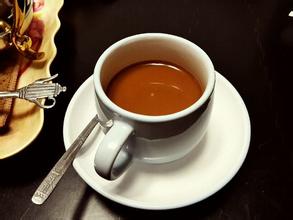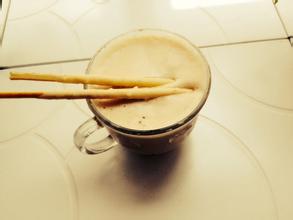Hawaiian Coffee Flavor Description Grind Characteristics Processing Method Taste Manor Price Introduction
Hawaii is the largest island in the Hawaiian Islands, so it is also called the Big Island. Kona coffee is grown in the west and south of Kona area of Hawaii Island. Coffee trees are spread all over the slopes of Hualalai and Mauna Loa, which are 150 meters to 750 meters above sea level, which is suitable for coffee growth.
The excellent quality of Kona coffee is due to its location and climate. Coffee trees grow on the slopes of volcanoes, and their geographical location ensures the altitude required for coffee growth; the dark volcanic ash soil provides the minerals needed for coffee growth; the climatic conditions are very suitable, and the sun gently passes through the air filled with moisture in the morning. In the afternoon, the mountains become more humid and foggy, and the clouds in the air are natural umbrellas for coffee trees. At night, they become clear and cool, but no frost falls. Natural conditions have allowed the average yield of Kona coffee to be very high, reaching 2240 kilograms per hectare, compared with 600 to 900 kilograms per hectare in Latin America.
In 1813, a Spaniard first planted coffee in Oahu's Manoa Valley, which today is the main campus of the University of Hawaii. In 1825, an English agriculturist named John Wilkinson transplanted coffee seeds from Brazil to the coffee plantation of Chief Birch on Oahu. Three years later, an American missionary named Samuel Reverend Ruggles brought branches from Chief Birch's coffee tree to Kona. The coffee is a descendant of the Arabica coffee tree originally grown in the Ethiopian highlands, and Kona coffee continues its noble and ancient lineage to this day
Although Hawaii is often affected by tornadoes, the climate conditions are ideal for coffee growing. There is plenty of rain and sunshine here, and there is no worry about frost. In addition, there is a strange natural phenomenon called "free shade." On most days, around 2 p.m., white clouds appear in the sky, providing the coffee trees with the shade they need. In fact, it is the natural conditions that make Kona produce more Arabica coffee than any other plantation in the world, and maintain a high quality, unique growth and climate to create a stronger coffee flavor. For example, coffee yields 560- 900 kg/ha in Latin America and 2240 kg/ha in Kona.
Unfortunately for coffee fans, only about 1400 hectares produce Kona coffee. And because of Hawaii's high income levels and high tourist numbers, Kona coffee is so expensive that even "konablend"(no more than 5% kona) is sold. Neighboring islands such as maui, kauai and molokai have also begun growing coffee commercially in recent years.
Hawaii's coffee industry has to compete for space with expanding tourism. Most coffee is grown on the slopes of Mauna Loa. Mauna Loa was originally a volcano located in the western part of the Kona region of Hawaii. The length of the coffee producing area is about 30 kilometers, and its cultivation area is mainly concentrated in the north and south of the area. Coffee trees are grown in relatively inhospitable areas, but the soil is fertile and contains volcanic ash. Although it takes a lot of physical effort to start growing and is difficult to manage, it is comforting to note that coffee trees in Kona (at least those growing above 90 metres above sea level) seem to be immune to any pests and diseases

Important Notice :
前街咖啡 FrontStreet Coffee has moved to new addredd:
FrontStreet Coffee Address: 315,Donghua East Road,GuangZhou
Tel:020 38364473
- Prev

Colombia Coffee with High Balance Flavor Description Grind Taste Characteristics Treatment Introduction
World coffee is divided into two series, one is represented by Brazil's hard coffee, strong taste; the other is represented by Colombia's soft coffee, its taste light. The difference lies in the altitude of the origin and the planting method. Brazil grows coffee in hilly red soil more extensively, while Colombia produces coffee in mountainous black soil intensively. Colombia Premium is rich and thick with a clear nose
- Next

Introduction to the production areas of fragrant Costa Rican Coffee with the characteristics of Grinding degree
Coffee was introduced into Costa Rica from Cuba in 1729. Today, its coffee industry is one of the well-organized industries in the world, with a yield of 1700 kg per hectare. Costa Rica has only 3.5 million people but 400m coffee trees, and coffee exports account for 25 per cent of the country's total exports. The volcanic soil of Costa Rica is very fertile and well drained, especially in the central part.
Related
- Detailed explanation of Jadeite planting Land in Panamanian Jadeite Manor introduction to the grading system of Jadeite competitive bidding, Red bid, Green bid and Rose Summer
- Story of Coffee planting in Brenka region of Costa Rica Stonehenge Manor anaerobic heavy honey treatment of flavor mouth
- What's on the barrel of Blue Mountain Coffee beans?
- Can American coffee also pull flowers? How to use hot American style to pull out a good-looking pattern?
- Can you make a cold extract with coffee beans? What is the right proportion for cold-extracted coffee formula?
- Indonesian PWN Gold Mandrine Coffee Origin Features Flavor How to Chong? Mandolin coffee is American.
- A brief introduction to the flavor characteristics of Brazilian yellow bourbon coffee beans
- What is the effect of different water quality on the flavor of cold-extracted coffee? What kind of water is best for brewing coffee?
- Why do you think of Rose Summer whenever you mention Panamanian coffee?
- Introduction to the characteristics of authentic blue mountain coffee bean producing areas? What is the CIB Coffee Authority in Jamaica?

